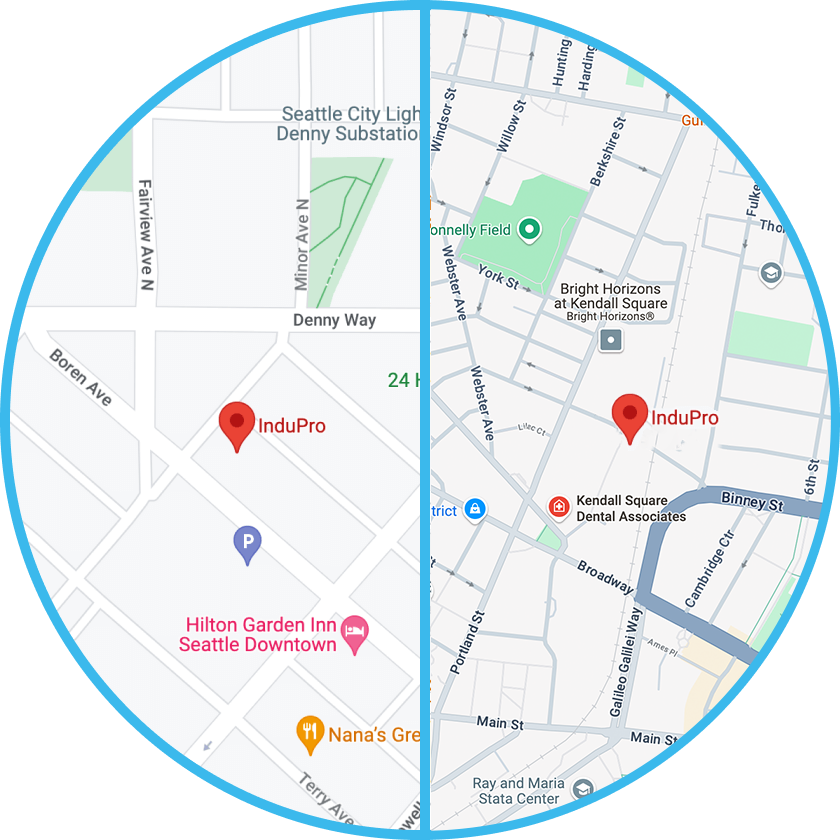Behind the science of proximity by design
The spatial relationship of the cell surface proteome defines our work. By leveraging inherently proximal proteins or by moving two or more proteins within closer proximity, we can unlock differentiated therapeutic pathways for a host of diseases.
We map cell surface protein proximity
The cell surface proteome exists as a multidimensional array of protein communities. By cataloging inherent proximity, we define protein spatial relationships to create novel therapeutic paradigms. Our high resolution protein microenvironment mapping technology feeds into our MInt platform and serves as a differentiating advancement over conventional approaches.
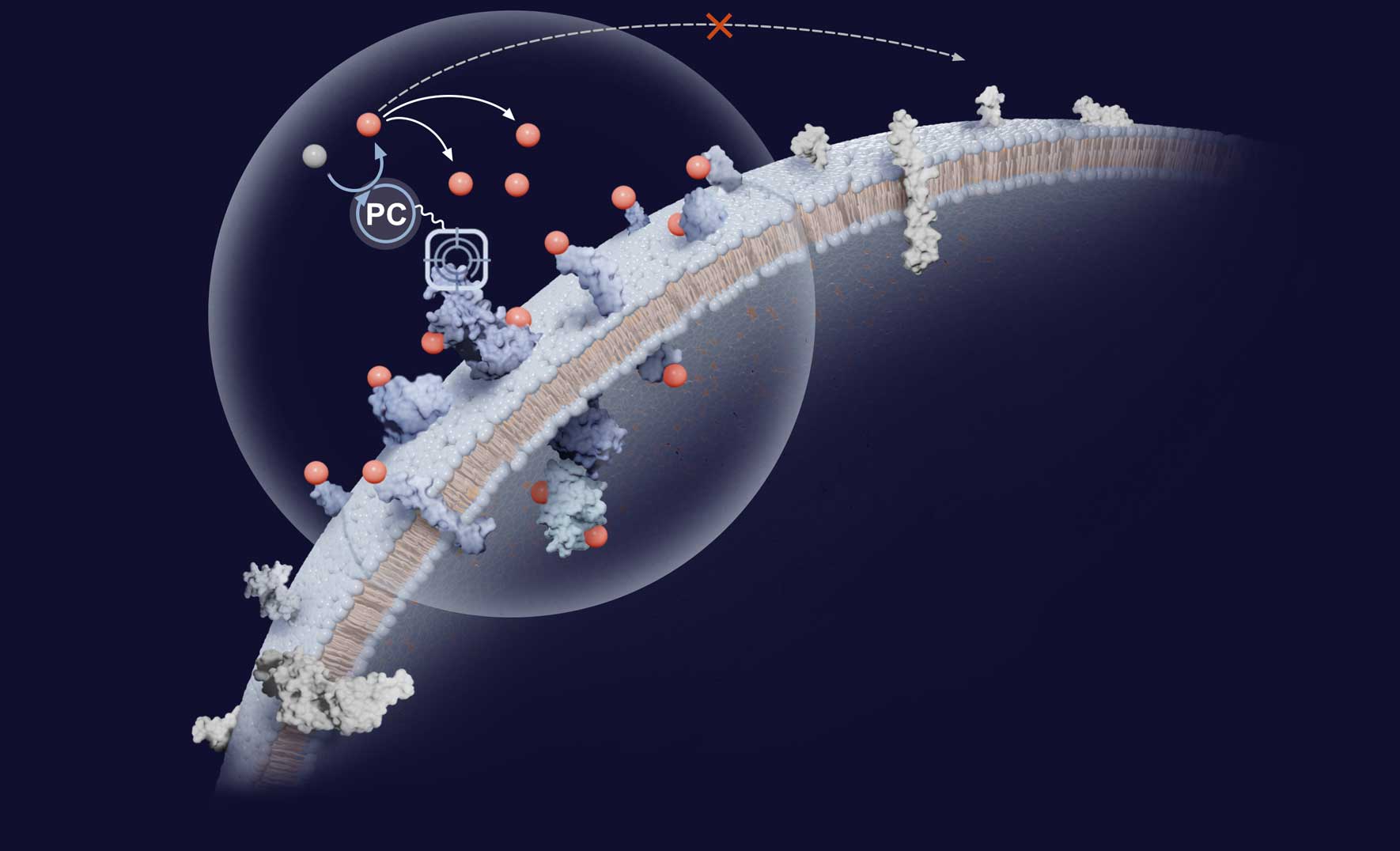
Proprietary MInt knowledge base uses AI/ML to enable co-target selection
Our MInt platform leverages deep learning analysis of proprietary protein microenvironment and membrane proteomic data to define the architecture of the cell surface proteome across different target classes and indications. This allows us to identify novel targets and co-target pairs for selective tumor targeting (bispecifc ADCs and TCEs) or immunological synapse modulation (bi/multispecific mAbs).
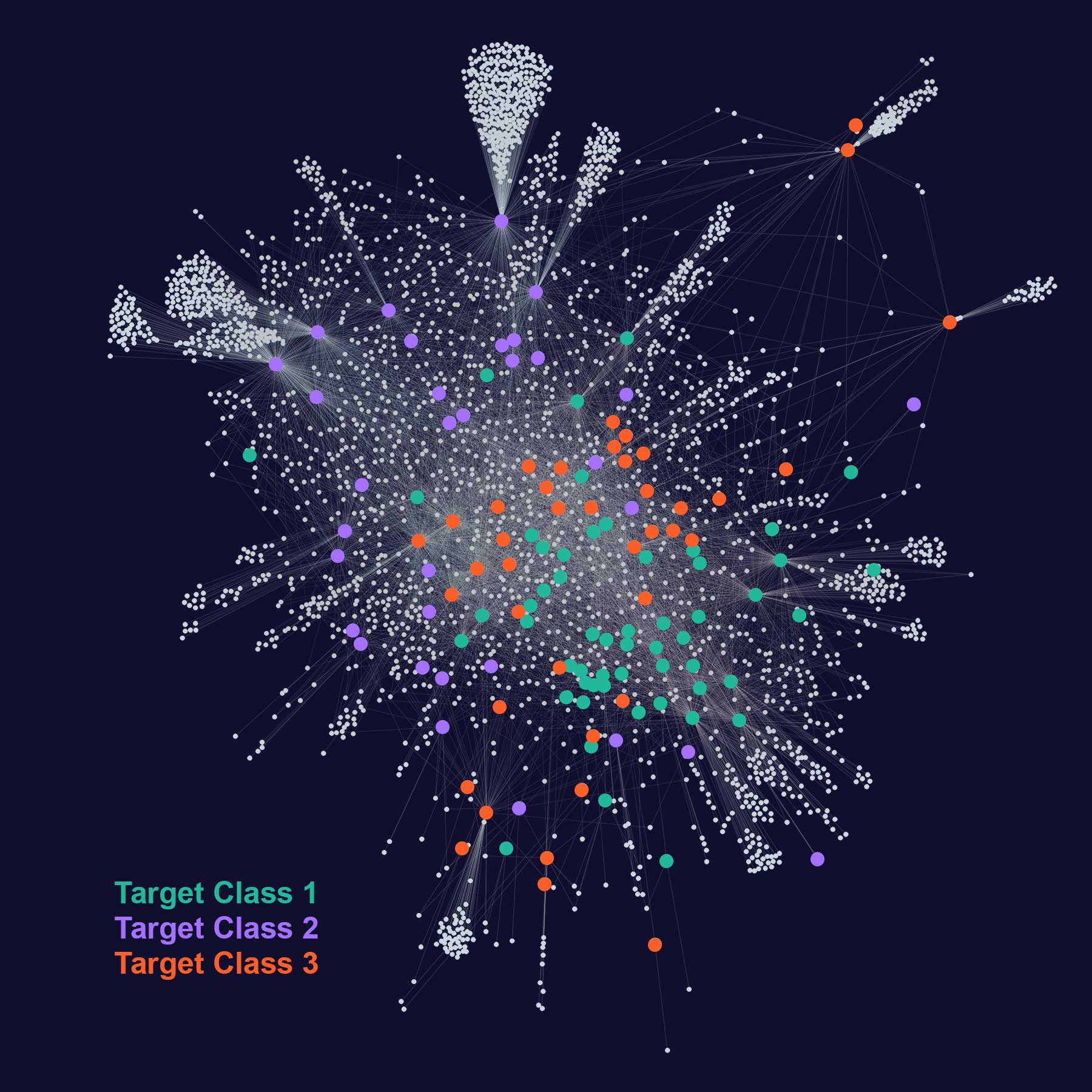
Our science in action
We address previously unmet patient needs through life changing therapies. Our biologics-driven, induced proximity approach to drug discovery applies to a broad range of signaling pathways, receptor classes, and membrane associated protein modification enzymes.
The initial focus of our therapies is on oncology and autoimmune diseases. Into the future, we look to bridge even greater possibilities through proximity by design.
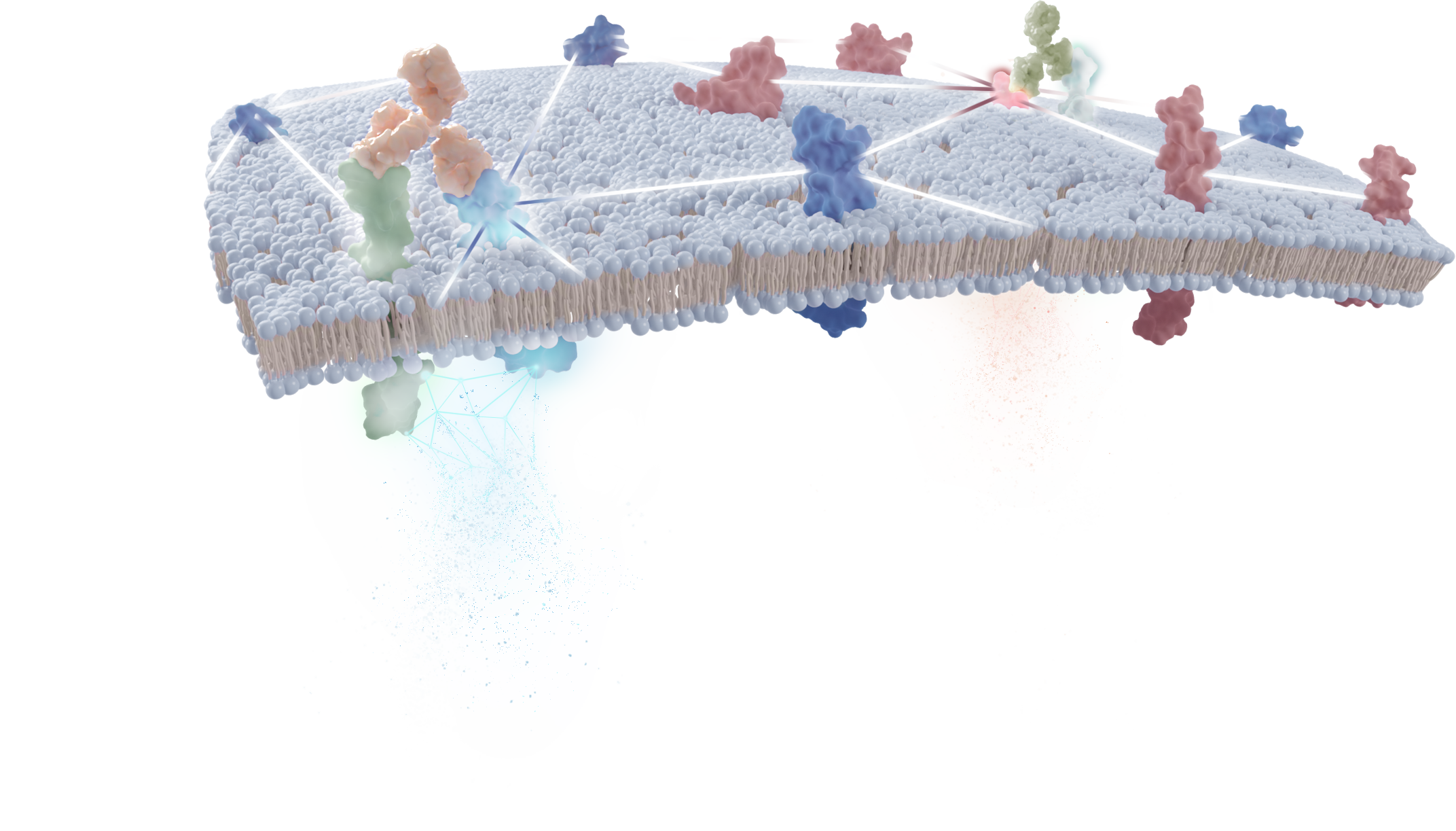
InduPro is developing selective targeting therapeutics by leveraging tumor associated proximity antigens (TAPAs).
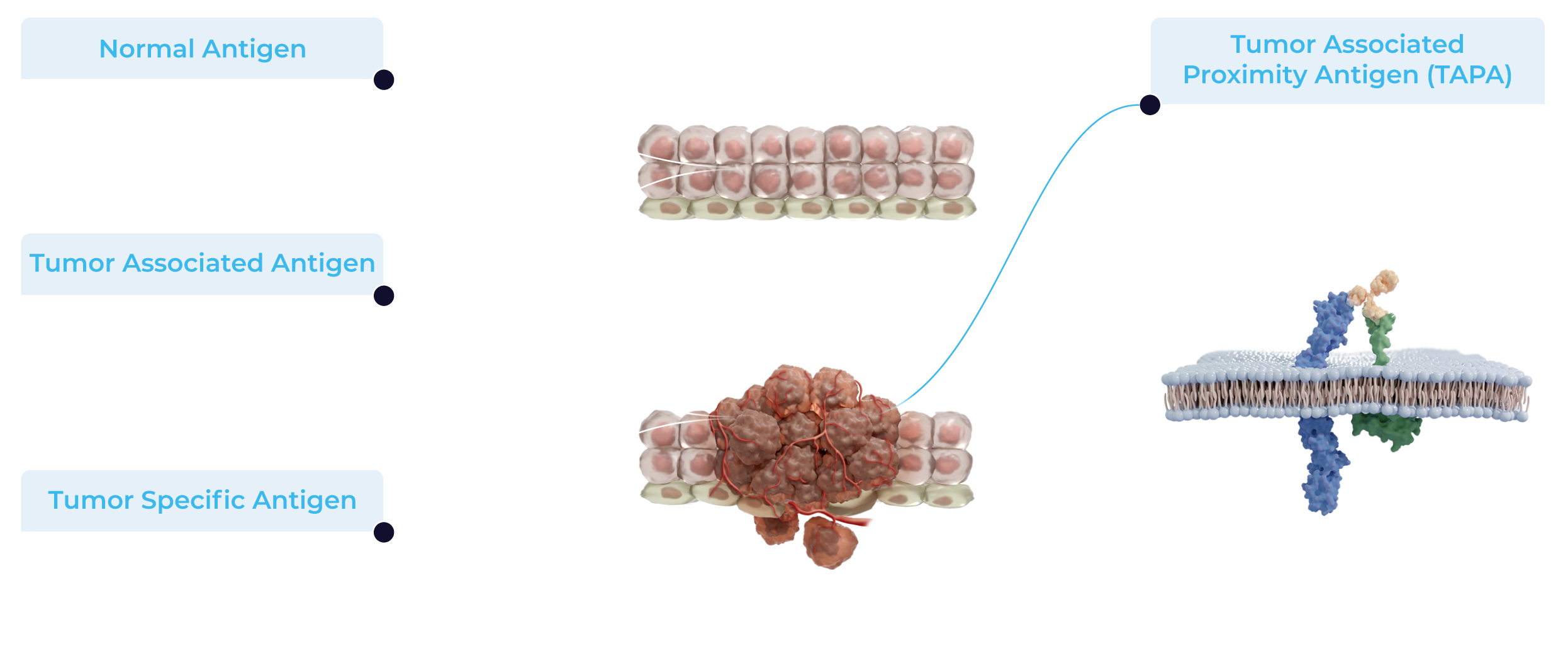
TAPAs are surface antigens that are proximal to tumor associated antigens (TAAs) within tumor microenvironments. Their dual presence and shared proximal biology enables selective co-targeting of tumor cells over normal cell environments. This overcomes current challenges associated with targeting TAAs that can also exist on normal tissues or tumor specific antigens (TSAs) that are poor therapeutic targets. Our TAPA discovery platform for co-targeting on tumor surfaces differentiates from traditional approaches.
Proximity-based co-targeting enables novel therapeutic development
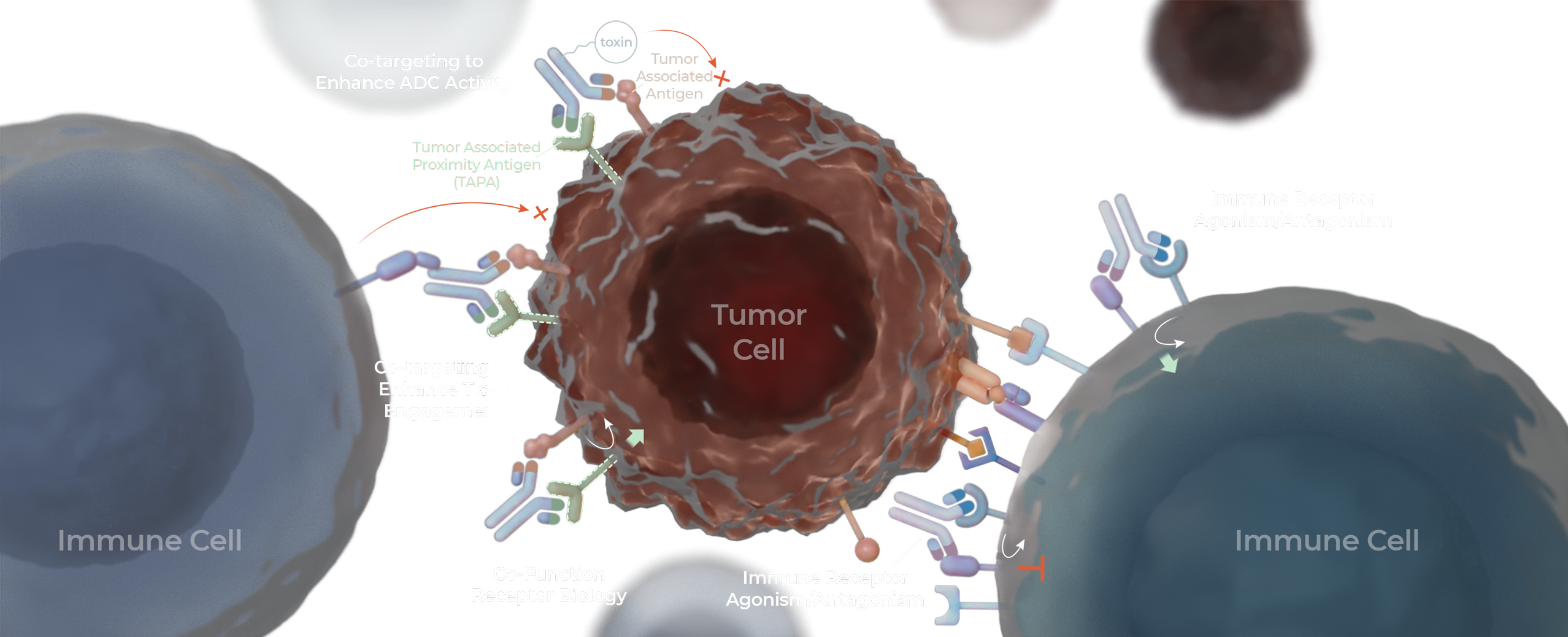
Dual protein targeting facilitates cell-selective therapeutic delivery, and relocating receptors into new, local environments alters or creates new signaling pathways.
How proximity by design makes a difference
Drug discovery built on both inherent and induced proximity impacts process, platforms, and people:
Discovery
- Identifies novel protein interactions and signaling biology
- Defines native ligands and co-receptors, and assesses signaling networks
Platform
- MInt gives insights into biology from inherent proximity
- Our Binder Toolbox manipulates and creates biology from induced proximity
Therapeutics
- New pairings create new therapeutic paradigms
- Addressing known biology and targets in new ways brings more effective, safer medicines to patients
Learn more about our platforms – and the two-fold strategy of inherent and induced proximity that differentiates us.
Contact Us
InduPro Seattle
1930 Boren Ave Suite 200
Seattle, WA 98101
InduPro Boston
1400 One Kendall Square
Ste 14-201
Cambridge, MA 02139
Phone
(206) 593-5005
General Inquiries:
[email protected]
